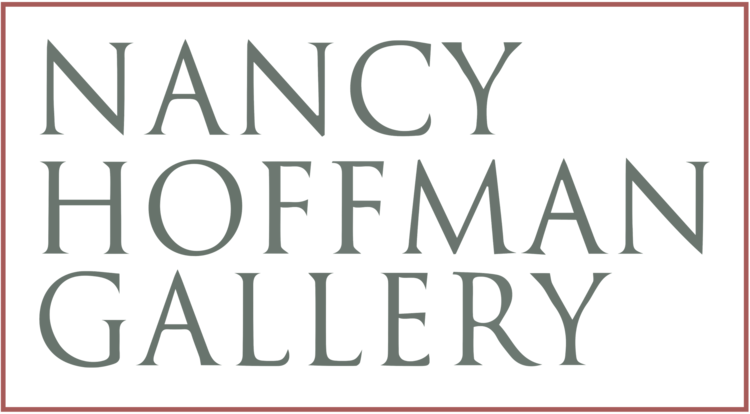Painter Frank Owen, now eighty-three, is still making dramatic and complex works charged with spontaneous gestures, bold geometric forms, and surprising juxtapositions of luminous color. One is supposedly less active and able in old age, but not Owen, as the paintings in “Retrospection,” his solo presentation at Nancy Hoffman Gallery, clearly affirm.
His compositions are remarkably energetic and acknowledge his debt to Abstract Expressionism. Although the artist was struck by Jackson Pollock’s art when he was a young man, he goes his own exuberant way, eschewing Jack the Dripper’s more death-inflected peregrinations.
According to psychoanalyst Erik Erikson, life’s development passes through eight psychosocial stages, each imbued with a particular conflict. On the last leg, the battle is between maintaining integrity (and sociality) and succumbing to despair (and isolation), which brings with it a sense of the meaninglessness and worthlessness of existence. The canvases in the exhibition are a testimony to Owen’s integrity, his utter defiance of sorrow. Certainly, one can regard the flat black planes in Definer, Grazer, Lecture, and Venture, all 2022, as potential signifiers of death, but the brilliant flickering hues that surround them—simmering yellows, sensuous oranges, and revivifying reds, to name merely a handful—suggest a more ecstatic visualization of the great hereafter and a deep engagement with the vicissitudes of painting.
The majority of the works on display were painted in 2022. Among the more notable early pieces included in the show was Stone Study III, 1990. Its wonderful wooden frame, adumbrated by charcoal-colored lumps encircled by halos of pale gray, is charged with gestures that remind me of Kandinsky’s embrace of “the theory of moving electricity,” which he used to justify his own brand of abstraction. At the heart of the piece are the titular rocks, marvelously rendered and levitating above an anxious, wiry grid. The canvas, imbued with an otherworldly presence, feels oracular, though what it’s trying to foretell is a complete mystery.
Kandinsky also spoke of the importance of an artwork’s “mood,” and, indeed, Owen’s paintings are plenty moody. Some seem exquisitely sensitive to nature, as the lovely, juicy floral forms hovering over a pale ground in Untitled, 2001, imply. Winter Wheat, 1974, the earliest piece on view, epitomizes this acuity: Its thin, nervelike bands in white, crimson, blue, and green—arranged into large, voluminous clusters—are simultaneously turbulent and controlled, visceral and refined.
All of the canvases in this show are of singular aesthetic quality and possess a sustained expressionist vitality, and as such they are consummate masterpieces, all the more so because they remind us that Owen’s preferred medium is joyously alive. Owen says that he was part of “a vibrant group of young (and older) artists” who “attempted to counter the assertion that ‘painting is dead.’” His fecund works present what the artist terms “Whew” moments—that is, fresh new points of formal invention where spontaneity and structure seem inseparable, where perceptual and emotional experiences aesthetically converge. According to him, the exhibition is “an act of looking back,” but it is indisputably facing forward, chock-full of “visual densities” and “multiple image events,” to use his language, making the works what psychologist Abraham Maslow calls peak experiences. Old age has ripened Owen’s art to sweet perfection, as it possesses all that abstract painting can provide with generous abundance.
